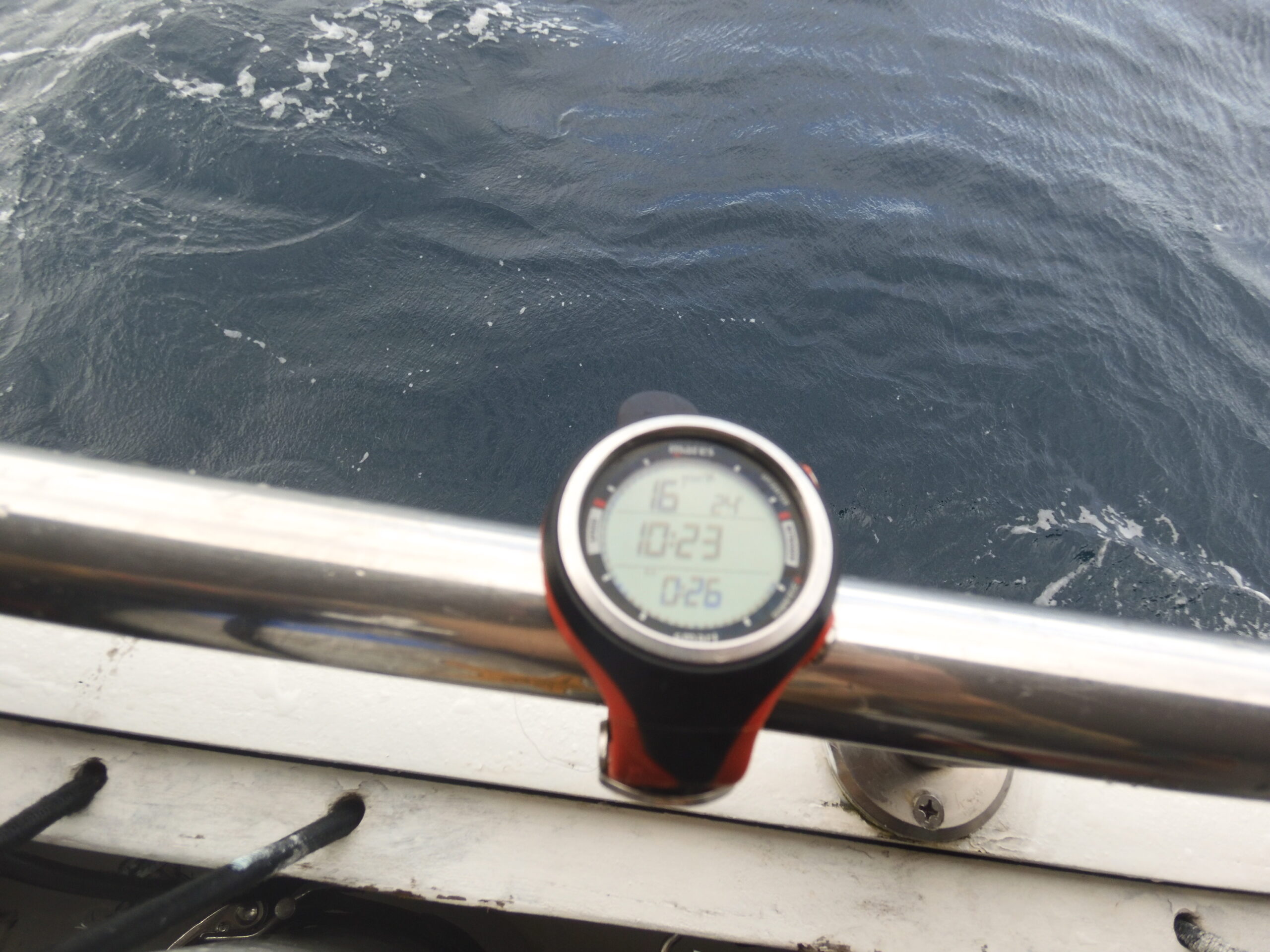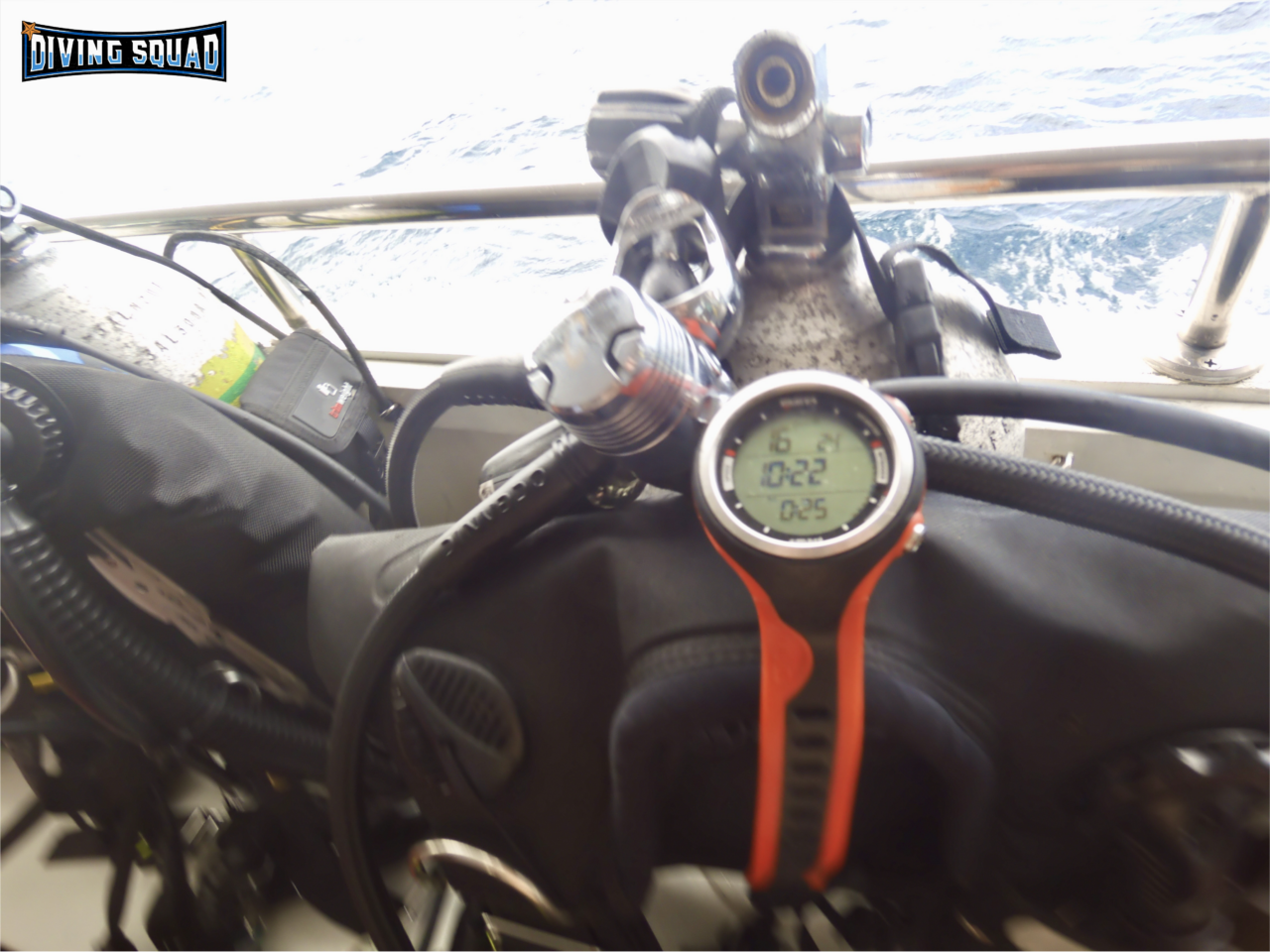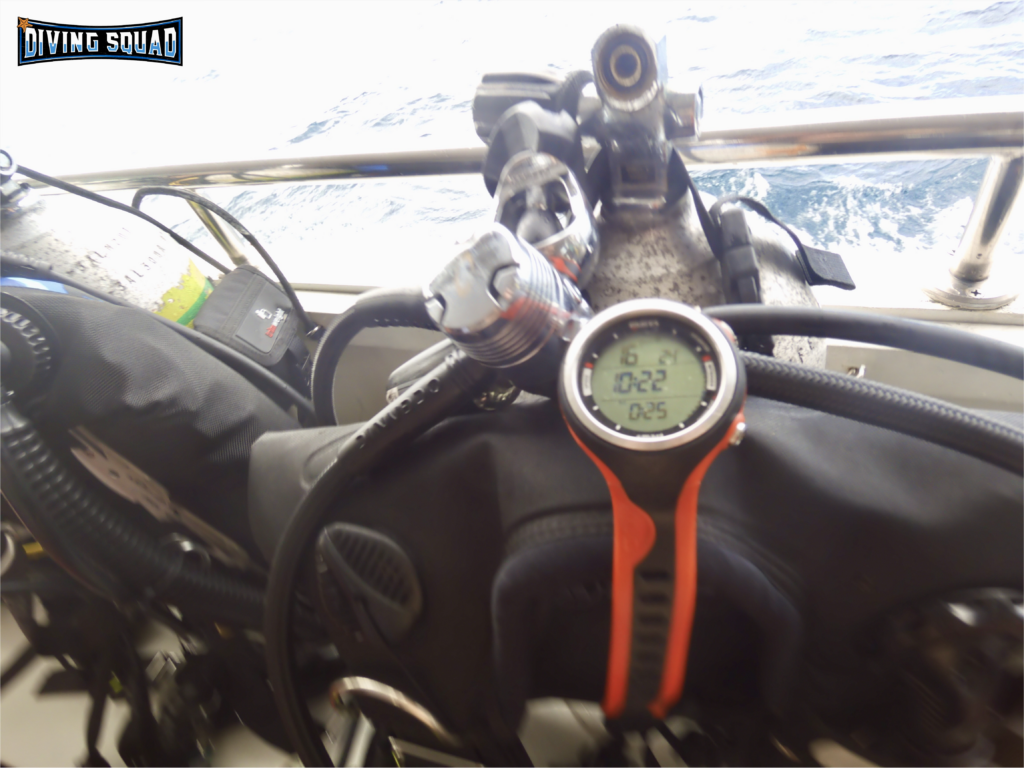
Affordable, reliable and durable, the Mares Smart is a popular model of dive computer that’s been around for some time.
It’s designed with beginner scuba divers in mind; which is evident from it’s incredibly simple user-interface, conservative RGBM and lack of unnecessary features.
Perhaps its biggest selling point is that it’s watch sized – being one of the all time cheapest dive computers to be so.
This means that unlike other cheap and mid-priced dive computers which are far too bulky for every day use, the Mares Smart can function as a regular wristwatch.
It even has a dedicated watch mode with calendar, alarm and dual time-zone features – nice!
Whilst the Mares Smart does lacks some features of more expensive dive computers (e.g. a compass or air integration), features like these are only really required by advanced divers and even then, they’re not essential.
For its target audience – beginner divers wanting a dive computer that can double up as an everyday watch, the Mare Smart is an awesome choice with excellent value for money.
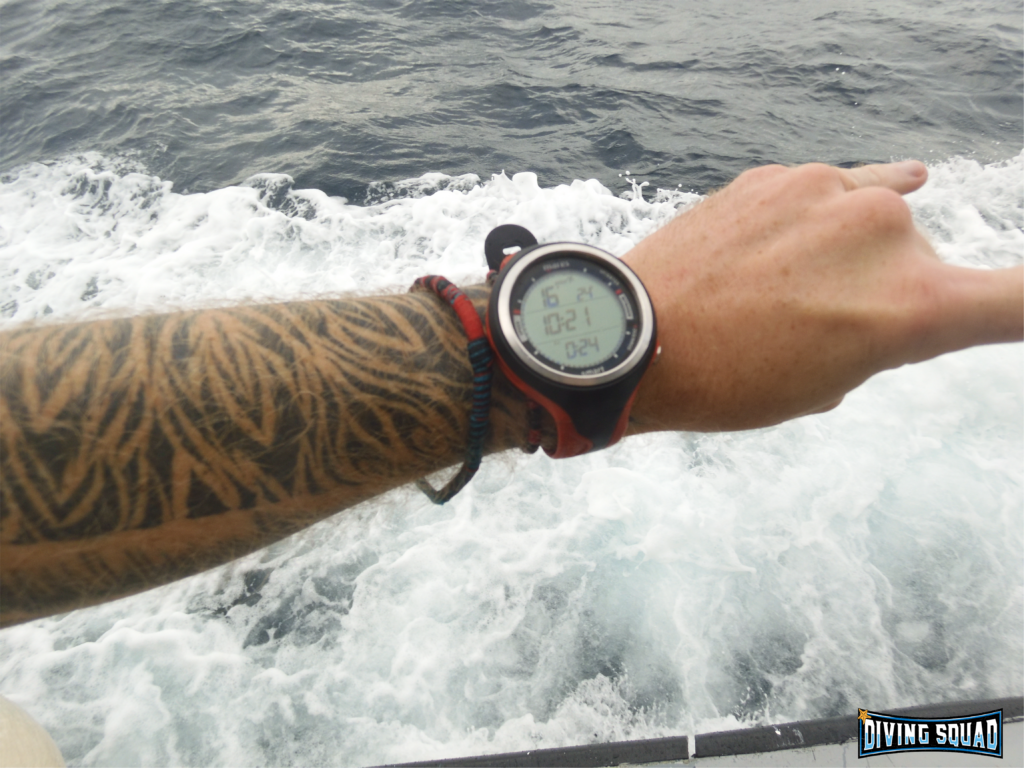
FEATURES:
Depth rating: 492 ft (150 m)
PROS:
- Watch-sized (with dedicated watch features)
- Affordable
- Easy to use
- Durable
- Free dive mode
- Range of colour options
CONS:
- No compass, air integration or tec mode.
- Short logbook
- Strap is a little short (can buy strap extension)
1. High definition display in watch-sized case:
The Mares Puck Pro features a high definition LCD display measuring 1.25 inches across and protected by a scratch-resistant mineral lens This is a sleek, watch-sized dive computer that will look just as smart on your wrist at a casual or formal event as it will on a dive. It’s actually one of the all-time cheapest dive computers to be watch-sized: cheaper and most other similarly priced models that are much bulkier; making them too chunky for every day wear.
Further enhancing the sophisticated look of the Mares Smart, it’s steel buttons and strap buckle are coated in PVD.
Information is intuitively divided across 3 rows. Under factory settings the top row displays current depth and maximum depth, the middle row shows no-deco info (or time when not diving) and on the bottom row you have dive time and water temperature. You can actually change which information is displayed in the top and bottom row under settings.
In addition to numerical readings, you also get extra info in the form of bars around the circumfrence of the display which shows your ascent rate, nitrogen loading and, when paired with a wireless transmitter, tank pressure (aka how much air you have left).
It’s easy to read the display in poor light thanks to the backlight, which you can activate by holding down the top button.
2. Easy user-interface (2 buttons):
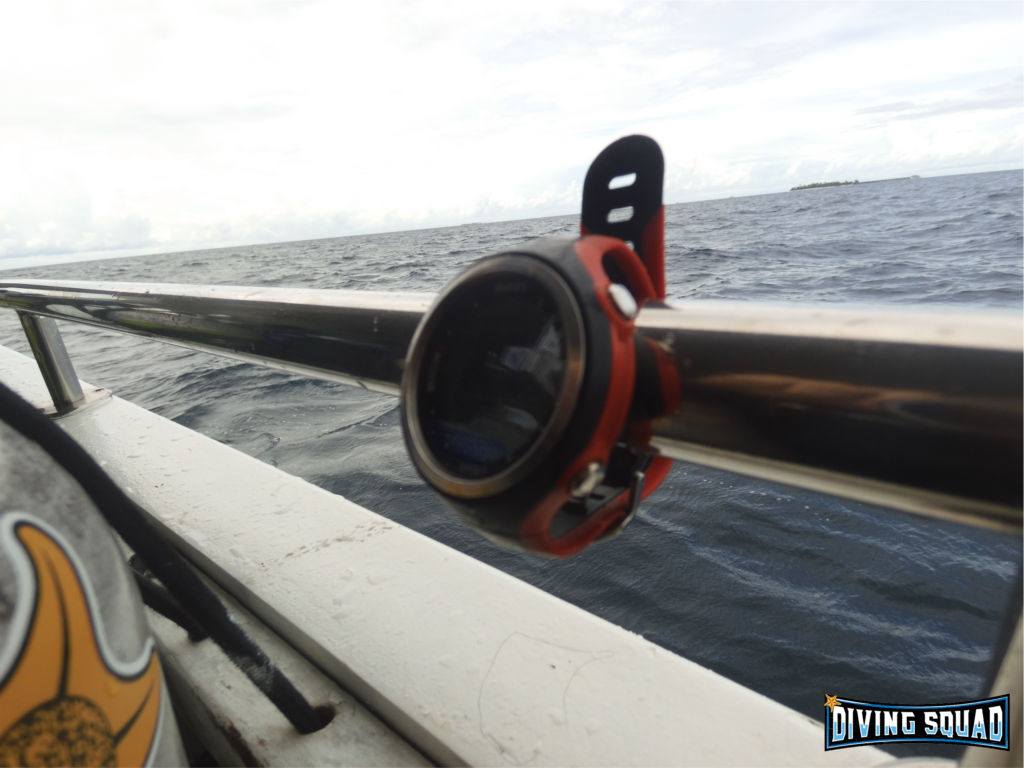
The Mares Smart has an incredibly straightforward user-friendly that only takes a couple of minutes to get used to.
It’s operated via just two buttons – pushing the top button will cycle up whilst holding it down selects. Pushing the bottom button will cycle down and holding it down is back.
You can cycle through and apply settings to chronograph, pre-dive, modes, settings, logbook, dive planner, info and time.
Cheaper dive computers are usually operated by just one button which can make it a little slow to apply settings whereas expensive dive computers with loads of settings options can have up five buttons.
Personally, I feel that two buttons is just the right amount for the Mares Smart considering how much you can do with it.
3. Modes: Air, Nitrox, Gauge, Free Dive & Watch:
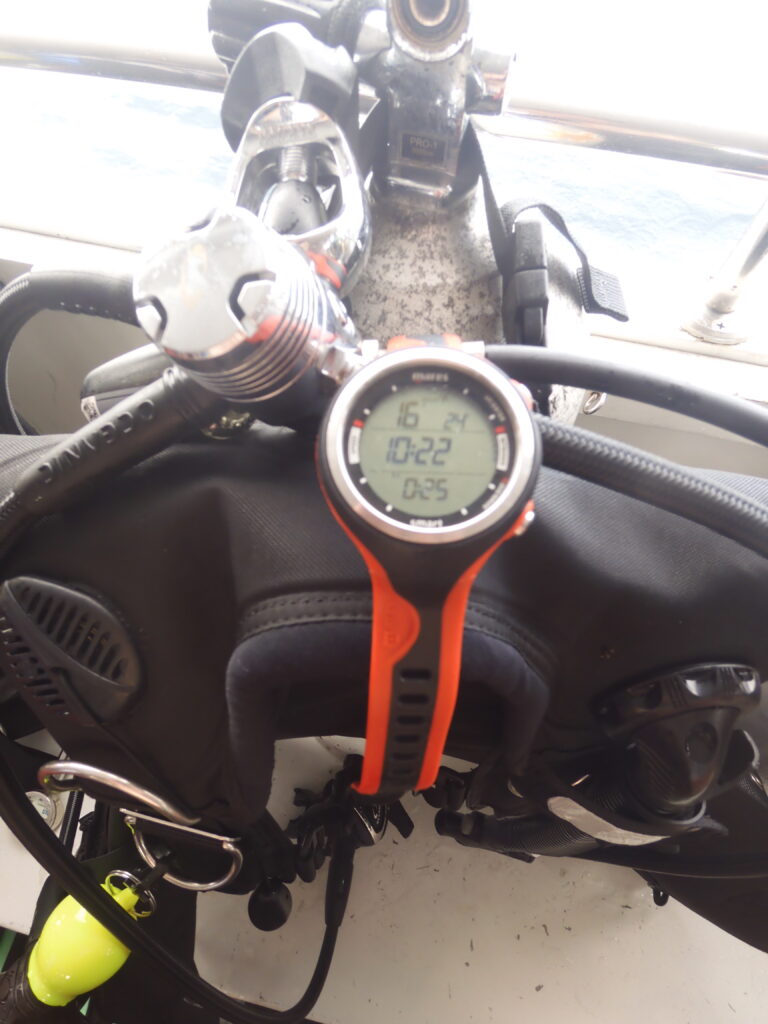
- Air Mode: The standard mode for when scuba diving with a normal tank of air.
- Nitrox Mode: For when you’re diving with a nitrox mix. If you’ve not heard of nitrox diving before, that’s because it takes a day of special training – but once you’ve done that, applying and using the nitrox mode with your Mares Smart is incredibly easy.
- Gauge Mode: When this mode is applied, the Mares Smart stops tracking the theoretical nitrogen mode and instead simply displays dive time in minutes and seconds. Chances are you probably won’t need this mode.
- Apnea (Free Dive) Mode: For when you’re free diving – which is quite a different kettle of fish (pun intended!) to scuba diving.
- Watch Mode: Because the Mares Smart is small enough to use as an everyday watch it has a dedicated watch mode which gives you calendar, alarms and dual-time zone options.
The Mares Smart also has a freshwater calibration, is altitude adjustable up to 12,100 feet and features a mixed gas setting for diving with up to two tanks containing different gas blends from 21 – 99% oxygen.
4. Mares-Wienke RGBM algorithm:
RGBM stands for reduced gradient bubble model and is an algorithm which works with a dive computers depth sensor and timer to calculate how much nitrogen gas is (theoretically) being absorbed and released by the tissues in the wearers body during a dive. This info is used to work out no-deco limit info – the most important function of any dive computer!
The Mares Smart utilises the Mares-Wienke RGBM. Wienke refers to the bubble-specialist Dr. Bruce Wienke – the dude who went on to develop said algorithm.
In the case of the Mares-Wienke RGBM it’s been ever-slightly “modified” from the original RGBM algorithm; to better suit the computational limitations of Mares dive computers.
The Mares-Wienke RGBM is more conservative algorithm than say many tec diving friendly algorithms which means you could find yourself reaching your no-deco limits a little sooner than if you were using a dive computer with a less conservative RGBM. However, because the Mares Smart has been designed specifically with beginners in mind this is actually a good thing as it will only serve to keep you safer.
If you skip safety stops or have a bad dive-profile (e.g. saw-toothing or pushing NDL limits), you will get significant limitations on repetitive dives and if you continue to ignore this, you’ll even get locked out of using your Mares Smart for 24 hours! This is all in the interest of encouraging you to dive in a safer, more responsible way.
You can adjust the conservatism of the Mares-Wienke RGBM to make it even more conservative – but you’ll only want to to do this if you have pre-existing medical conditions that put you more at risk of decompression sickness.
5. Logbook:
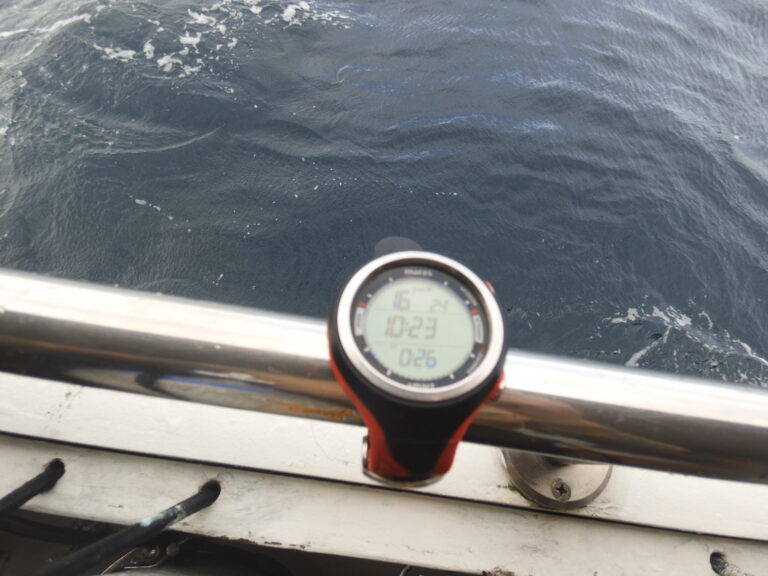
There is some conflicting info over the length of the Mares Smart logbook.
On the Mares website it says it is 20 hours long but the user manual claims it is 35 hours. Let’s play it safe and assume it’s 25 hours, which is pretty damn short (even 35 would still be short!).
It records dive profile info for every dive at a 5 second interval rate, with info on depth, dive entry and exit times, temperature and when you have it paired with an air integration pod your rate of air consumption.
Its easy to view the logbook on Mares Smart itself – but you can also upload it to a PC with a USB cable – however you have to purchase said USB cable separately which is a little frustrating.
6. Alarms & Warnings:
There’s several different things that can trigger an alarm from the Mares Smart dive computer. These are:
- Maximum ascent rate exceeded.
- CNS toxicity levels exceeding 75%.
- Safe ppO2 level exceeded.
- Missing a decompression stop.
- Low battery.
When the Mares Smart’s alarm is triggered it beeps loudly and the backlight comes on, usually with a text message saying why the alarm has been triggered – e..g maximum ascent rate exceeded.
7. User-replaceable battery:
The CR2540 lithium battery of the Mares Smart is user-replaceable which saves you time and postage money – a handy feature to have, especially if need to replace it all of a sudden such as at the start of a diving holiday!
You can refer to the Mares Smart user manual for how to change the battery here.
At approximately 200 hours long it has a decent battery life – although if you use the backlight a lot (which can happen if you use watch mode frequently) it’ll be considerably less than this.
Other bits and bobs
Warranty & Support:
Mares are incredibly on the ball when it comes to responding to customer queries and problems.
They offer a 2 year warranty for the Mares Smart. Feel free to check heck out the Mares warranty guidelines here:
Ongoing Maintenance:
The Mares Smart is a sturdy and durable dive computer. So long as you don’t expose it to any extreme temperatures, repeatedly smash it against hard surfaces or stick it in the microwave it should last you on dives for years to come.
As with all your scuba diving gear, you will want to make sure you rinse it in freshwater after every dive. Be sure to press its buttons repeatedly whilst doing this. At first you’ll see tiny air bubbles escaping from the sides of the buttons. Keep pushing them until this stops.
FINAL VERDICT:
The Mares Smart is one of the all-time cheapest dive computers to be as small as a wristwatch and with it’s dedicated watch mode including calendar, alarms and dual timezones it knows it!
This makes it an awesome budget option for anyone who wants a dive computer that they can wear as an every day watch.
Sure you don’t get advanced features like a compass or air integration but these aren’t essential.
Perhaps the biggest downside is actually the very short divelog – but again this is of relatively minor importance as most divers don’t actually look back at their dive computers log anyway!
In terms of functionality, reliability and aesthetic appeal the Mares Smart is a great option with awesome value for money.

